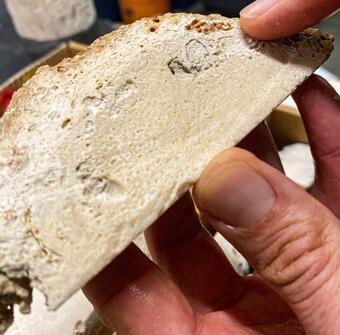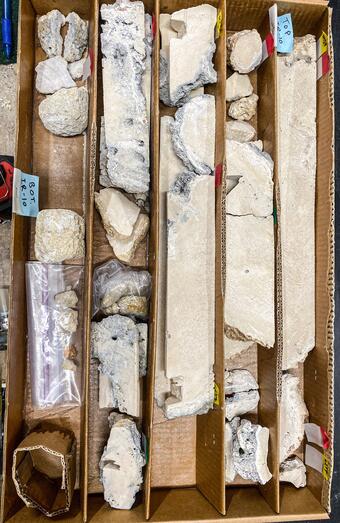Protocols for improving sea-level reconstructions in the western Atlantic
Anastasios Stathakopoulos (Oceanographer) and Lauren Toth (Research Oceanographer) published a new article titled “A revised Holocene coral sea-level database from the Florida reef tract, USA.”
Sea-level reconstruction is a valuable method used by researchers for understanding past sea-level changes. It also provides critical baseline information for projections of future sea-level rise. In the tropical and subtropical western Atlantic, reef-building corals are commonly used as indicators for tracking past sea level.
This collaborative study builds upon nearly 50 years of research conducted by USGS scientists and others by compiling and examining Holocene (the last ~11,700 years) coral-reef core records collected from over 30 locations throughout the south-Florida region (https://doi.org/10.7717/peerj.8350).
The publication characterizes the core records to a new level of detail that is more useful for sea-level reconstruction. It provides new data-screening protocols that can be applied to filter out poor-quality or questionable coral sea-level data, allowing researchers to only incorporate the highest-quality data in their coral-based sea-level reconstruction.
Furthermore, this publication provides a framework for researchers to evaluate coral data-selection criteria and thus increase the robustness of sea-level models from coral-reef locations throughout the western Atlantic.
Get Our News
These items are in the RSS feed format (Really Simple Syndication) based on categories such as topics, locations, and more. You can install and RSS reader browser extension, software, or use a third-party service to receive immediate news updates depending on the feed that you have added. If you click the feed links below, they may look strange because they are simply XML code. An RSS reader can easily read this code and push out a notification to you when something new is posted to our site.





